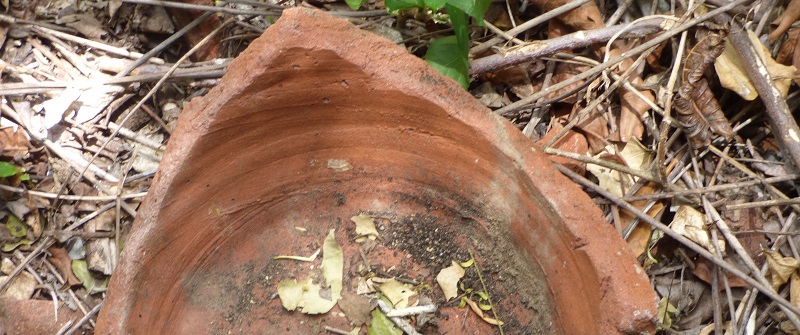
04 May Blog: Historical archaeology: An avenue for Haitian history (part 2)
By Joseph Sony Jean. Republished with permission from Society for Historical Archaeology 54-1: 41-44, spring 2021.
My travel in 2014 led me to four seasons of archaeological field surveys in the area of Fort-Liberté (Figure 1), with the task of documenting traces of human activities and thereby of proposing a landscape biography of the region. The region had been settled by the Spaniards when the political, social, and economic value of this part of the island, which had prompted the founding of Puerto Real, decreased. The mid-17th century saw a transition from the Spanish economy of cattle ranching and hide production to large-scale plantations developed by the French colonists in the 17th and 18th centuries, sustained by a “slavery-based” economy.
This fieldwork brought me to the heart of the materiality related to the colonial history of Saint-Domingue (Figure 2). This history is generally told by studying the archives the colonizers created. The robust interest in research on the topics of the plantation economy, the “slave revolt,” and the Haitian Revolution has provided great insights into this history. However, using a material-culture approach to study this period opens windows through which to examine all aspects of French colonialism in innovative, nuanced, and critical ways. For instance, one may ask what the colonial texts can tell us about the interplay of the continuous spatial violence between the material culture, lifeways, and resistance of enslaved people in a micro/macro landscape. If, in seeking an answer, we take up only the analysis of the archives created in the colonial context of Saint-Domingue, it will not be possible to uncover the hidden narratives about how places were created and used in a countercolonial landscape context. Answering the question posed above was not my motivation in 2014, but it reveals crucial areas for digging up untold stories about the colonial past, and, more broadly, the lifeways of the colonial system.
Addressing this gap requires consideration of the movable and fixed material across the Haitian landscape today, looking at the past users and the reasons and conditions under which the material was used. Nevertheless, some portions are still used today, which provides another valuable approach for tackling the colonial material culture’s temporalities. That opens up opportunities for addressing other lines of research in Haitian history. Casale et al. have recently highlighted the material culture in Haïti that is originally from the Albisola region of Italy and documented the archaeological contexts in which it was found, showing that the study of ceramics has a great future for adding to the understanding of change and patterns in the context of the “slave trade.” In addition, historical archaeology will enable us to reevaluate the narratives about the uses of space in association with material culture on the part of the enslaved Africans in the colony of Saint-Domingue, people who created an antislavery nation by rejecting European colonial rule. In terms of spotlighting the enslaved Africans’ contestation, archaeology has a lot to redress and to demonstrate about how these individuals and communities engaged with material culture in different locations prior to the Haitian Revolution.
The historical archaeology of Haïti has great potential and a longue vie. It takes us from the early struggles in 1492, when the Espanola ideal was created by ignoring Haïti, through Haïti’s second transformation into the so-called Pearl of the Antilles—though only for the French colonists, not for the enslaved Africans. Next, when it comes to addressing questions about the French colonial system, I think many scholars with postcolonial interests will use methods that expose the lifeways of enslaved Africans and their descendants. There are too many things for one generation to uncover; the future will always unearth new narratives. Material culture study is a vital aspect of history—of this I am sure.
Photo: Fragment of a colonial sugar pot – @ Joseph Sony Jean.
Joseph Sony Jean is a post-doctoral researcher at KITLV. His work focuses on the longue-durée landscape transformation of Haiti, using data from ethnography, ethnohistory and archaeological records.




Rey Miguel
Posted at 02:14h, 18 NovemberAnd thus is of no danger to the economic elite